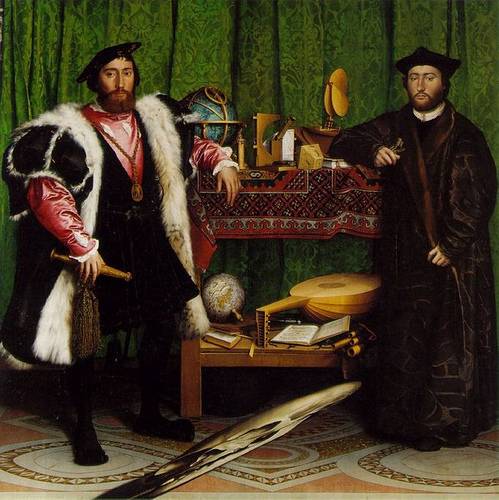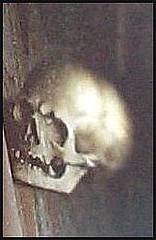
The arctic tern sees more daylight than any other creature on the planet — it migrates from pole to pole, 12,000 miles.
In its lifetime, that’s equivalent to flying to the moon and back.

The arctic tern sees more daylight than any other creature on the planet — it migrates from pole to pole, 12,000 miles.
In its lifetime, that’s equivalent to flying to the moon and back.
Q: What is the difference between a rhododendron and a cold apple-dumpling?
A: The one is a rhododendron and the other is a cold apple-dumpling.
— Angelo Lewis, Drawing-Room Amusements, 1879
He adds, “You surely wouldn’t wish for a greater difference than that.”
quinquiplicate
v. to multiply by five

Self-portrait by Sarah Biffen (1784-1850), a Victorian painter who had no arms.
She painted this with her mouth.
If you wear an analog watch, you can use it as a compass:
Hold it flat in the palm of your hand, with the hour hand pointing in the direction of the sun. The point midway between the hour hand and the figure 12 is due south.
(In the Southern Hemisphere, point the figure 12 toward the sun. The midpoint between the 12 and the hour hand points north.)
The king of hearts has no mustache — he lost it when the original design was copied badly, and the error has persisted.
Decibel levels:
Schopenhauer wrote, “The amount of noise which anyone can bear undisturbed stands in inverse proportion to his mental capacity.”
It’s estimated that if you flip a U.S. nickel 6,000 times, it will land once on its edge.

This is The Ambassadors (1533), the celebrated painting by Hans Holbein the Younger. It’s full of noteworthy symbols of exploration, but what’s that odd skewed element at the bottom?
If you view the canvas from a narrow angle, the image resolves into a skull:

This is an early example of anamorphic perspective, an invention of the early Renaissance. It’s thought that Holbein intended that the painting would be hung in a stairwell, when people ascending the stairs would view the image from the proper angle and get a gruesome surprise.
Why? That’s an unanswered question.
Physicist J.H. Hetherington had already typed up a physics paper in 1975 when he learned of an unfortunate style rule: Physical Review Letters does not accept the pronoun we in single-author papers.
Hetherington didn’t want to retype the paper — this was before word processors had become widespread — so he added his cat as a second author (“F.D.C. Willard,” for “Felis Domesticus Chester Willard.”)
“Why was I willing to do such an irreverent thing? Against it was the fact that most of us are paid partly by how many papers we publish, and there is some dilution of the effect of the paper on one’s reputation when it is shared by another author. On the other hand, I did not ignore completely the publicity value, either. If it eventually proved to be correct, people would remember the paper more if the anomalous authorship were known. In any case I went ahead and did it and have generally not been sorry. Most people are amused by the concept, only editors, for some reason, seem to find little humour in the story.”
Chester is believed to be the only cat who has published research in low-temperature physics. “When reprints arrived, I inked F.D.C. Willard’s paw and he and I signed about 10 reprints which I sent to a few friends,” Hetherington later recalled. “The story has now been told many times and my wife can add that she sleeps with both authors!”